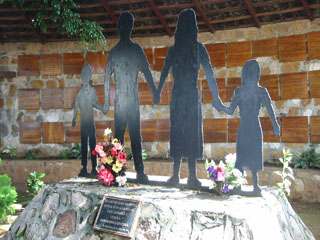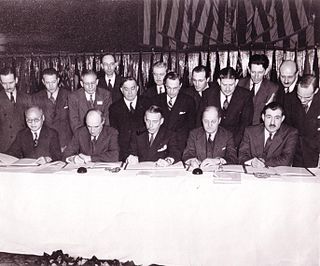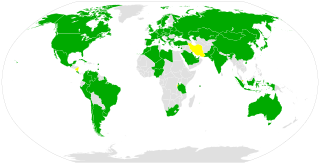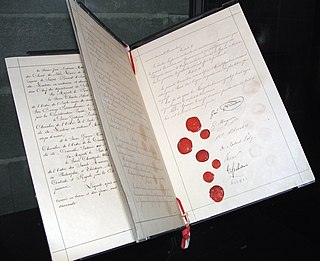| C149 | |
|---|---|
| ILO Convention | |
| Date of adoption | June 21, 1977 |
| Date in force | July 11, 1979 |
| Classification | Nursing Personnel |
| Subject | Specific Categories of Workers |
| Previous | Working Environment (Air Pollution, Noise and Vibration) Convention, 1977 |
| Next | Labour Administration Convention, 1978 |
Nursing Personnel Convention, 1977 is an International Labour Organization Convention.
It was established in 1977, with the preamble stating:
Having decided upon the adoption of certain proposals with regard to employment and conditions of work and life of nursing personnel,...
As of 2023, the convention had been ratified by 41 states.
| Country | Date | Status |
|---|---|---|
| Azerbaijan | 19 May 1992 | In Force |
| Bangladesh | 17 Apr 1979 | In Force |
| Belarus | 03 May 1979 | In Force |
| Belgium | 29 Mar 1988 | In Force |
| Congo | 24 Jun 1986 | In Force |
| Denmark | 05 Jun 1981 | In Force |
| Ecuador | 11 Jul 1978 | In Force |
| Egypt | 03 Nov 1982 | In Force |
| El Salvador | 30 Jan 2013 | In Force |
| Fiji | 28 May 2008 | In Force |
| Finland | 08 Jun 1979 | In Force |
| France | 10 Sep 1984 | In Force |
| Ghana | 27 May 1986 | In Force |
| Greece | 17 Mar 1987 | In Force |
| Guatemala | 09 May 1995 | In Force |
| Guinea | 08 Jun 1982 | In Force |
| Guyana | 10 Jan 1983 | In Force |
| Iraq | 04 Jun 1980 | In Force |
| Italy | 28 Feb 1985 | In Force |
| Jamaica | 04 Jun 1984 | In Force |
| Kenya | 06 Jun 1990 | In Force |
| Kyrgyzstan | 31 Mar 1992 | In Force |
| Latvia | 08 Mar 1993 | In Force |
| Lithuania | 12 Jun 2007 | In Force |
| Luxembourg | 08 Apr 2008 | In Force |
| Malawi | 01 Oct 1986 | In Force |
| Malta | 18 May 1990 | In Force |
| Norway | 05 Jul 1989 | In Force |
| Philippines | 18 Jun 1979 | In Force |
| Poland | 04 Nov 1980 | In Force |
| Portugal | 28 May 1985 | In Force |
| Russian Federation | 03 May 1979 | In Force |
| Seychelles | 12 Oct 1993 | In Force |
| Slovenia | 30 Jan 2003 | In Force |
| Sweden | 10 Jul 1978 | In Force |
| Tajikistan | 26 Nov 1993 | In Force |
| Ukraine | 03 May 1979 | In Force |
| Tanzania | 30 May 1983 | In Force |
| Uruguay | 31 Jul 1980 | In Force |
| Venezuela | 17 Aug 1983 | In Force |
| Zambia | 19 Aug 1980 | In Force |
The Protocol for the Prohibition of the Use in War of Asphyxiating, Poisonous or other Gases, and of Bacteriological Methods of Warfare, usually called the Geneva Protocol, is a treaty prohibiting the use of chemical and biological weapons in international armed conflicts. It was signed at Geneva on 17 June 1925 and entered into force on 8 February 1928. It was registered in League of Nations Treaty Series on 7 September 1929. The Geneva Protocol is a protocol to the Convention for the Supervision of the International Trade in Arms and Ammunition and in Implements of War signed on the same date, and followed the Hague Conventions of 1899 and 1907.

The American Convention on Human Rights, also known as the Pact of San José, is an international human rights instrument. It was adopted by many countries in the Western Hemisphere in San José, Costa Rica, on 22 November 1969. It came into force after the eleventh instrument of ratification was deposited on 18 July 1978.
The Montreal Convention is a multilateral treaty adopted by a diplomatic meeting of ICAO member states in 1999. It amended important provisions of the Warsaw Convention's regime concerning compensation for the victims of air disasters. The Convention attempts to re-establish uniformity and predictability of rules relating to the international carriage of passengers, baggage and cargo. Whilst maintaining the core provisions which have served the international air transport community for several decades, the treaty achieves modernization in a number of key areas. It protects passengers by introducing a two-tier liability system that eliminates the previous requirement of proving willful neglect by the air carrier to obtain more than US$75,000 in damages, which should eliminate or reduce protracted litigation.

The Convention on the Prohibition of the Use, Stockpiling, Production and Transfer of Anti-Personnel Mines and on their Destruction of 1997, known informally as the Ottawa Treaty, the Anti-Personnel Mine Ban Convention, or often simply the Mine Ban Treaty, aims at eliminating anti-personnel landmines (AP-mines) around the world. To date, there are 164 state parties to the treaty. One state has signed but not ratified the treaty, while 32 UN states, including China, Russia, and the United States have not; making a total of 33 United Nations states not party.

The Convention on International Civil Aviation, also known as the Chicago Convention, established the International Civil Aviation Organization (ICAO), a specialized agency of the United Nations charged with coordinating international air travel. The Convention establishes rules of airspace, aircraft registration and safety, security, and sustainability, and details the rights of the signatories in relation to air travel. The Convention also contains provisions pertaining to taxation.
International humanitarian law (IHL), also referred to as the laws of armed conflict, is the law that regulates the conduct of war. It is a branch of international law that seeks to limit the effects of armed conflict by protecting persons who are not participating in hostilities and by restricting and regulating the means and methods of warfare available to combatants.

Protocol I is a 1977 amendment protocol to the Geneva Conventions concerning the protection of civilian victims of international war, such as "armed conflicts in which peoples are fighting against colonial domination, alien occupation or racist regimes." In practice, Additional Protocol I updated and reaffirmed the international laws of war stipulated in the Geneva Conventions of 1949 to accommodate developments of warfare since the Second World War (1937–1945).

The Optional Protocol to the Convention on the Rights of the Child on the Involvement of Children in Armed Conflict (OPAC), also known as the child soldier treaty, is a multilateral treaty whereby states agree to: 1) prohibit the conscription into the military of children under the age of 18; 2) ensure that military recruits are no younger than 16; and 3) prevent recruits aged 16 or 17 from taking a direct part in hostilities. The treaty also forbids non-state armed groups from recruiting anyone under the age of 18 for any purpose.

Protocol II is a 1977 amendment protocol to the Geneva Conventions relating to the protection of victims of non-international armed conflicts. It defines certain international laws that strive to provide better protection for victims of internal armed conflicts that take place within the borders of a single country. The scope of these laws is more limited than those of the rest of the Geneva Conventions out of respect for sovereign rights and duties of national governments.

Protocol III is a 2005 amendment protocol to the Geneva Conventions relating to the Adoption of an Additional Distinctive Emblem. Under the protocol, the protective sign of the Red Crystal may be displayed by medical and religious personnel at times of war, instead of the traditional Red Cross or Red Crescent symbols. People displaying any of these protective emblems are performing a humanitarian service and must be protected by all parties to the conflict.
Working Environment Convention, 1977 is an International Labour Organization Convention.
The Geneva Convention on Prisoners of War was signed at Geneva, July 27, 1929. Its official name is the Convention relative to the Treatment of Prisoners of War, Geneva July 27, 1929. It entered into force 19 June 1931. It is this version of the Geneva Conventions which covered the treatment of prisoners of war during World War II. It is the predecessor of the Third Geneva Convention signed in 1949.

War can heavily damage the environment, and warring countries often place operational requirements ahead of environmental concerns for the duration of the war. Some international law is designed to limit this environmental harm.
Protective signs are symbols to be used during an armed conflict to mark persons and objects under the protection of various treaties of international humanitarian law (IHL). While their essential meaning can be summarized as "Don't shoot" or "Don't attack", the exact conditions implied vary depending on the respective sign and the circumstances of its use. The form, shape and color of these signs are defined by the rules of IHL. Usually, they are easy to draw in order to make even an improvised use as easy as possible, and they were chosen to be as concise, recognizable and visible as possible under all circumstances.

The Convention on Registration of Objects Launched into Outer Space was adopted by the United Nations General Assembly in 1974 and went into force in 1976. As of February 2022, it has been ratified by 72 states.

The Geneva Conventions are four treaties, and three additional protocols, that establish international legal standards for humanitarian treatment in war. The singular term Geneva Convention usually denotes the agreements of 1949, negotiated in the aftermath of the Second World War (1939–1945), which updated the terms of the two 1929 treaties and added two new conventions. The Geneva Conventions extensively define the basic rights of wartime prisoners, civilians and military personnel, established protections for the wounded and sick, and provided protections for the civilians in and around a war-zone.
The Convention on the Safety of United Nations and Associated Personnel is a United Nations treaty that has the goal of protecting United Nations peacekeepers and other UN personnel.
This is an index of nursing articles on Wikipedia.